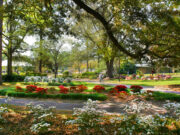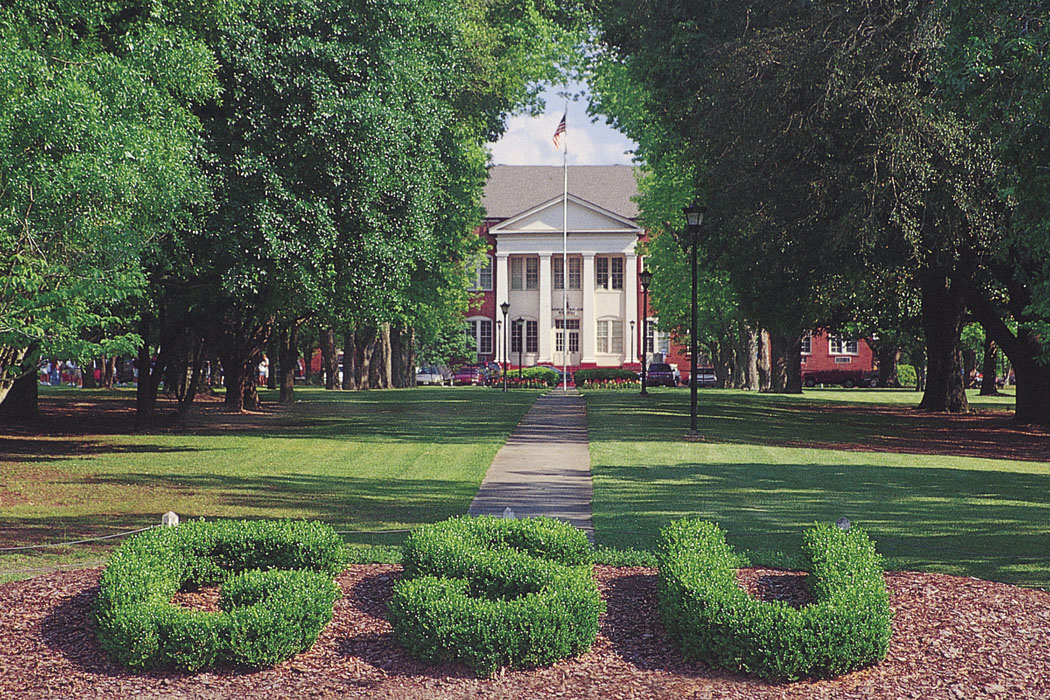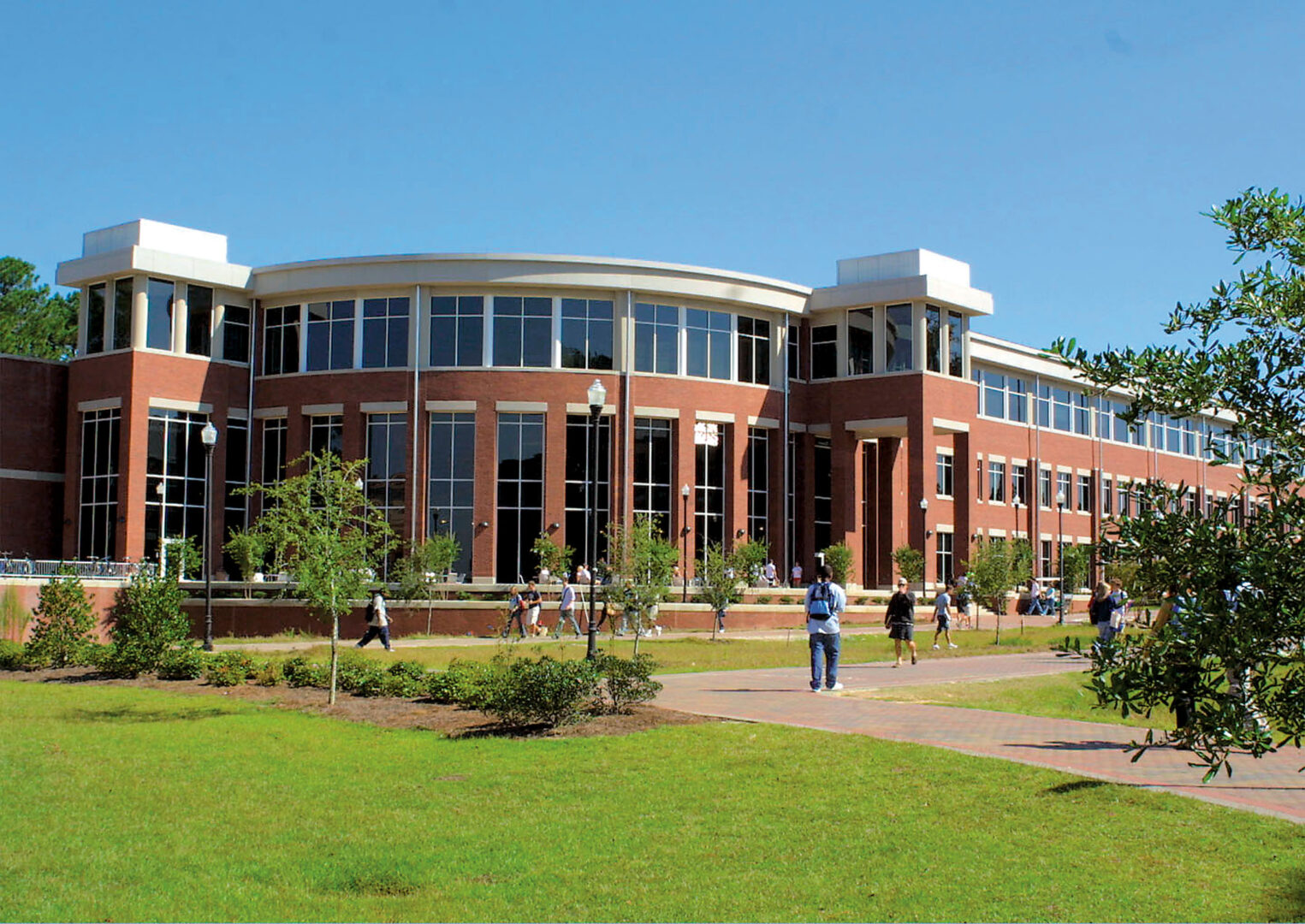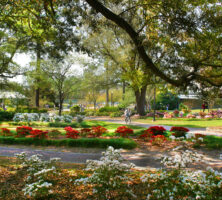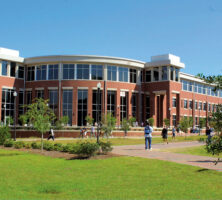Georgia Southern University, a member institution of the University System of Georgia, in Statesboro is the largest and most comprehensive center of higher education in the southern half of Georgia. The university’s roots run deep into the region, which has long sustained it.
Agricultural College
The newspaper in Statesboro learned early in 1906 of the state’s plan to open a new industrial and agricultural school in the First Congressional District. Immediately the editor summarized local opinion: “We want that college.” Although several communities in southeastern Georgia submitted bids on December 1, 1906, the Statesboro–Bulloch County delegation made certain theirs—the equivalent of $125,500—was the highest.
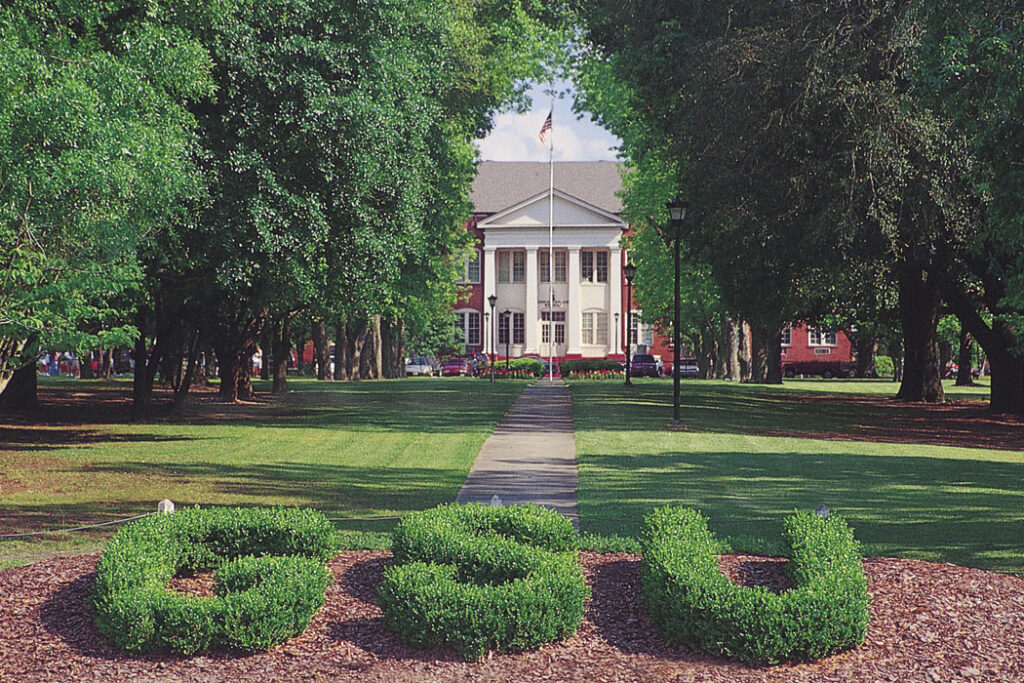
Courtesy of Georgia Southern University
When the school opened in 1908, it was officially named the First District Agricultural and Mechanical School, but the students called it the “Culture,” a shortened form of agriculture. The nickname took on a larger meaning for local citizens who viewed the A&M School as a symbol of their own aspirations. Supporters organized fundraisers, provided scholarships, and strongly identified with the “Culture.”
Over the years the community has prized highly its very own halls of ivy among towering longleaf pines on the hill south of Statesboro. Civic leaders and public officials lobbied for the better part of the twentieth century to advance the school to higher levels of academic service and respectability. In 1924 the A&M School was renamed Georgia Normal School when it added a teacher-training program and achieved accreditation by the American Association of Teachers Colleges; still, it remained a junior college.
State Teachers College
The legislature finally recognized the academic transformation of the Normal School in 1929, renaming it South Georgia Teachers College, a full-fledged four-year college. In 1939 a new name, Georgia Teachers College, marked President Marvin Pittman’s successful effort to transform the college into a statewide center for teacher education. Pittman emphasized academic excellence and often invited to the campus outstanding scholars and speakers from diverse backgrounds.
Pittman’s progressive outlook put him at odds with Georgia governor Eugene Talmadge. In 1941 the governor “purged” the university system. Two notable casualties were Pittman and a dean at the University of Georgia, Walter Cocking. The situations became known as the “Cocking affair.” Another casualty was higher education in Georgia, as national academic agencies disaccredited the entire university system. Most faculty and local citizens firmly supported President Pittman and their college. Governor Ellis Arnall, elected in 1942, restored integrity to a new and independent Board of Regents, which quickly reappointed Pittman.
When Pittman retired in 1947, the college was in the early stages of a growth spurt, fueled largely by returning veterans from World War II (1941-45). Enrollment increased in the 1950s, and in 1959 a new name, Georgia Southern College, reflected the importance of an expanded liberal arts curriculum.
Throughout the 1960s the faculty and administration proposed new degree programs, but significant change did not come until 1968, when the college received the authority to reorganize into separate schools of arts and science, education, and business. A new graduate school offered advanced degrees both on campus and in a number of locations in southeastern Georgia. In 1971 nearly 6,000 students were enrolled.
Over the next two decades the student body doubled in size, responding to an expanded curriculum and, some argue, to a highly successful intercollegiate football program. Momentum shifted in favor of a final name change for Statesboro’s old “Culture,” and in 1990 Georgia Southern University became the first regional university in the University System of Georgia.
The 634-acre campus has landscaped lawns, pine forests, and two lakes. Walkways wind through the campus and connect the main academic buildings. The academic center is the library, which is undergoing a major expansion to provide more collections and services. The university and larger community benefit from research and cultural activities conducted by the Museum of Natural and Cultural History, the Center for Wildlife Education and the Lamar Q. Ball Raptor Center, and the Botanical Garden.

Courtesy of Georgia Southern University
In 2003 more than 15,000 students were enrolled at this residential campus. It is second only to the University of Georgia as the first choice for university admission among new applicants, including HOPE Scholarship students. Students attend from forty-nine states and eighty nations. The remarkably diverse student body reflects a minority enrollment of 25 percent. Students participate in more than 150 organizations, including honor societies, service organizations, fraternities and sororities, academic clubs, religious groups, and recreation leagues.
Seven colleges now constitute the university: liberal arts and social sciences, business administration, education, health and human services, information technology, the Allen E. Paulson College of Science and Technology, and the Jack N. Averitt College of Graduate Studies. Twenty programs have received accreditation by national and international agencies. Students can pursue master’s degrees in most areas of the curriculum, as well as a doctor of education and the education specialist degree.
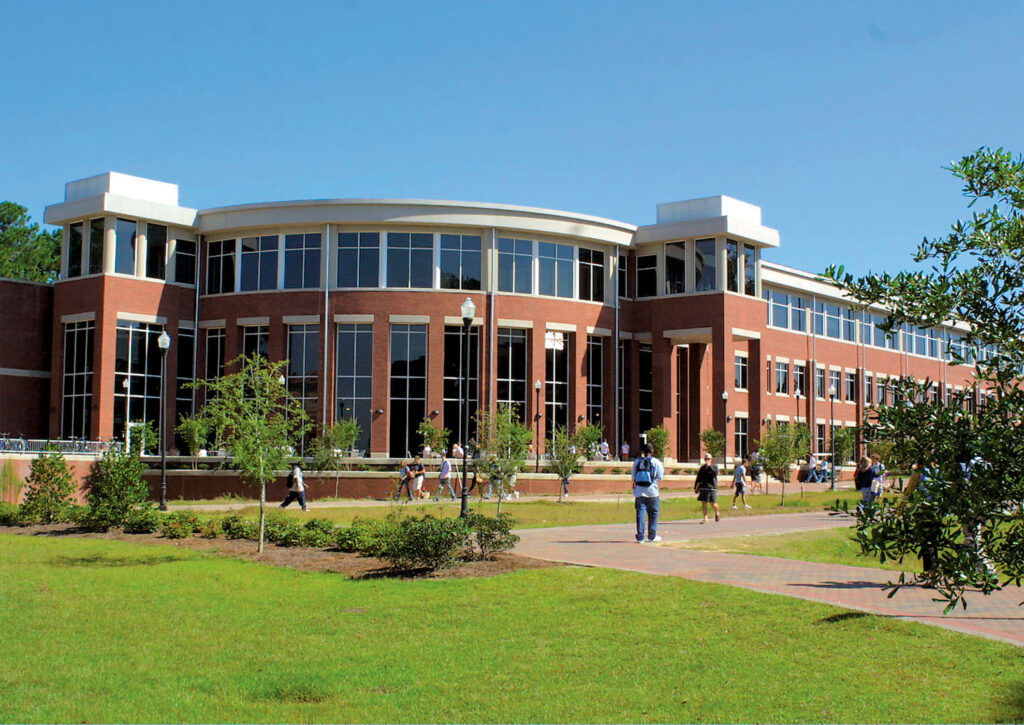
Courtesy of Georgia Southern University
The Georgia Southern Eagles have won six national football championships in National Collegiate Athletic Association Division I-AA since the late 1980s, earning the title “Team of the Twentieth Century.” The Eagles offer stiff competition in a dozen sports for women and men at Division I level. Academics and athletics complement each other, and eighty-one athletes recently made the Academic Honor Roll of the Southern Conference.
Statesboro’s old “Culture” on the hill has evolved into a nationally significant regional university, far surpassing dreams of early visionaries who struggled to obtain and sustain the First District A&M School. Approaching its centennial in 2006, Georgia Southern University benefits enormously from a loyal and supportive constituency. The spirit of 1906 inspires some 200 local volunteers to devote one day early in September each year to visiting businesses and individuals, telling the university’s story and soliciting funds to support scholarships and academic programs. At the end of this “Day for Southern,” donations routinely exceed $1 million.
The university’s current mission statement focuses on these major goals: good teaching, solid scholarship, diversity, applied learning, and regional service. The document concludes: “Georgia Southern University will be a catalyst for the aspirations of South Georgians and an emblem of their achievements.” In this way the university keeps the faith of those who worked so diligently to bring it to life nearly 100 years ago.


